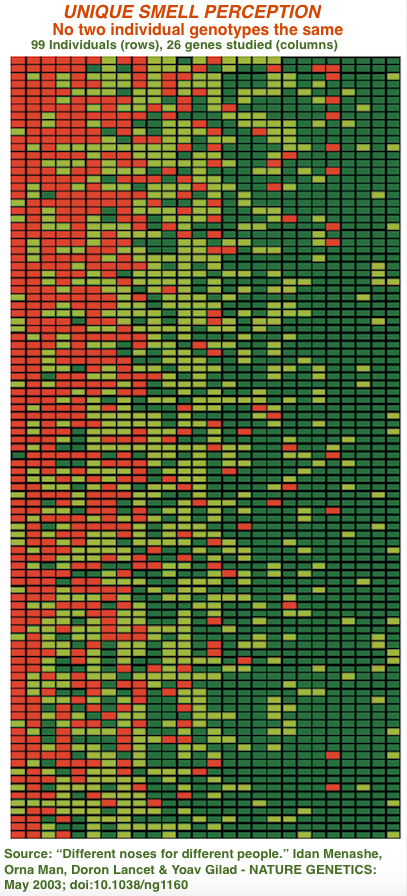Genetic science shows that wine descriptions and flavor profiling are way off base when it comes to helping people find wines that they will like.
This is because the odds are very, very small for two people to experience flavors in exactly the same way. This is because every individual has a different set of odor receptors.
No smell = no taste. The common cold is proof.
Genetic differences in smell are vital because scientists estimate that between 75 and 95 % of what we think of as taste actually depends on the olfactory receptors in the nose.
Even scientists who feel there is no precise percentage that can be calculated agree that:
“the pleasure, all the interesting dimensions of what is commonly called taste, the meaty, the floral, the fruity, the herbal, the citrus, the burnt, all derive primarily from the contribution of olfaction.”
Differences begin in the DNA. The human genome codes for 1,000 to 1,400 genes for odor receptors. 350 to 400 of those will be active in the average human. However, as the graphic to the left shows, it’s rare for two humans to have the same set.
189 people studied, 189 different sets of odor-related genes.
The graphic above is one of two in a scientific paper — (“Different noses for different people,”
Idan Menashe, Orna Man, Doron Lancet & Yoav Gilad. Nature Genetics, 5 May 2003; doi:10.1038/ng1160) — that illustrates this vast genetic diversity.
According to the study, of the 189 people whose genes were studies, none had the same odor receptor pattern..
“Each of the individuals examined had a unique genotypic [odor receptor] pattern.”
Further reading:
Molecular Genetics: “The sense of smell: genomics of vertebrate odorant receptors”
Journal of Cell Biology “The cell biology of taste”
